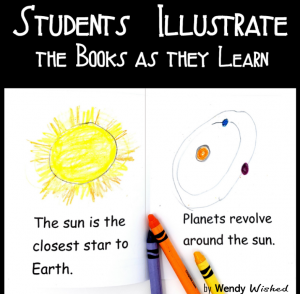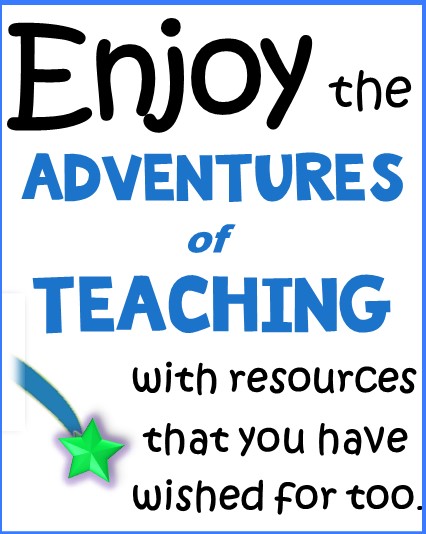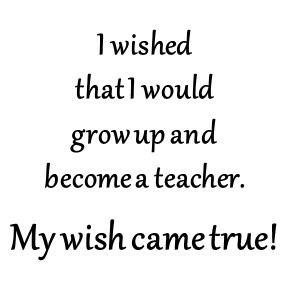Your first grade students will feel so smart when you teach patterns in space science lessons since they already have some background knowledge. Students have seen the moon and the stars up in the sky at night. In addition, they have noticed the moon phases too as the moon “changes shape” in a repeating pattern.
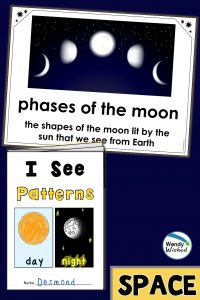
Focus on Patterns
Our goal of science lessons is to teach first grade students that patterns in space are observable. For example, day is followed by night. Stars are only seen at night. There are repeating seasons. When you notice a pattern, you can make predictions. This will be a very important aspect in future science lessons throughout the years to come. With this in mind, you want to start building their skills of observing and predicting now.
Teach Science Vocabulary
Teaching patterns observed in outer space begins with introducing vocabulary. Have visuals ready to share. Using real photos from the internet or videos are perfect for introducing the unit. Share photos in whole group, review in small group, then post them as a reference in your room.
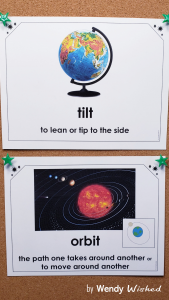
Read about Patterns in Space
Get a book into the hands of your first grade students even during science. If it is a book from the copy machine which provides places to color – that is even better. It will become theirs as they color, label, or even add things. They won’t need to return it to the library or the classroom bookshelf. It will be theirs to keep in their desk and then take home. Hopefully, it will be read again and again, perhaps, even shared with their families.
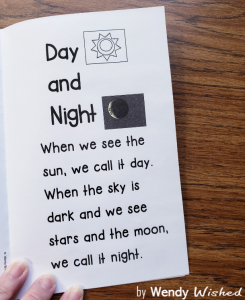
When teaching patterns in space science lessons, nonfiction books will supply your first grade students with real information. In addition, nonfiction books give you the opportunity to have your students notice text features. Check out the table of contents, the glossary, and the summary. Can your students add some labels to an illustration? Let them take on ownership of the book during the lesson.
Use Science Mini Books
Mini books became so popular with students in my classroom. The small size I think did the trick. Several students became expert folders and became very popular with their peers. Basically, I didn’t have to fold them all anymore. A win for me!
Mini books are educational and engaging. You can find mini books here.
Make Connections
Sooner or later as you progress in teaching your patterns in space science lesson, your first grade students will start thinking of connections to their own life. Hands will start popping up to share. Try to control the eye roll and groan as when your students see connections to their own life it is a good thing.
They have seen a full moon. The sun is always in the same direction when they leave the school building at the end of the day. They may wake up when it is dark but then the sun shines and it isn’t dark anymore. Your students have a wealth of experiences about patterns.
The connections between the patterns and their own life are being identified and students will want to share. With this in mind, you need to let your students turn and talk. Allow them the time to share as well as listen to others.
Write about What was Learned
Writing is the perfect follow up activity to reading. At this point, students will use the information which they just read about and put it into their own words.
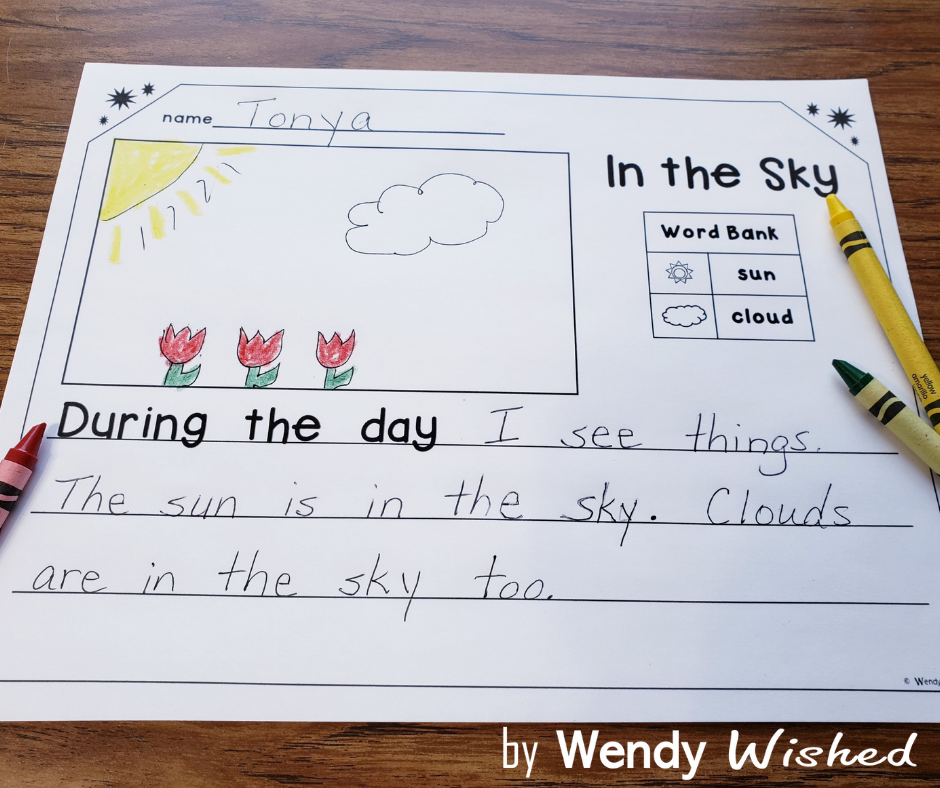
Document Observations
Since an emphasis on observation is so important in science lessons, let your students document what they notice. They can compare and contrast highlighting the similarities and differences. These are great skills to develop in your little scientists.
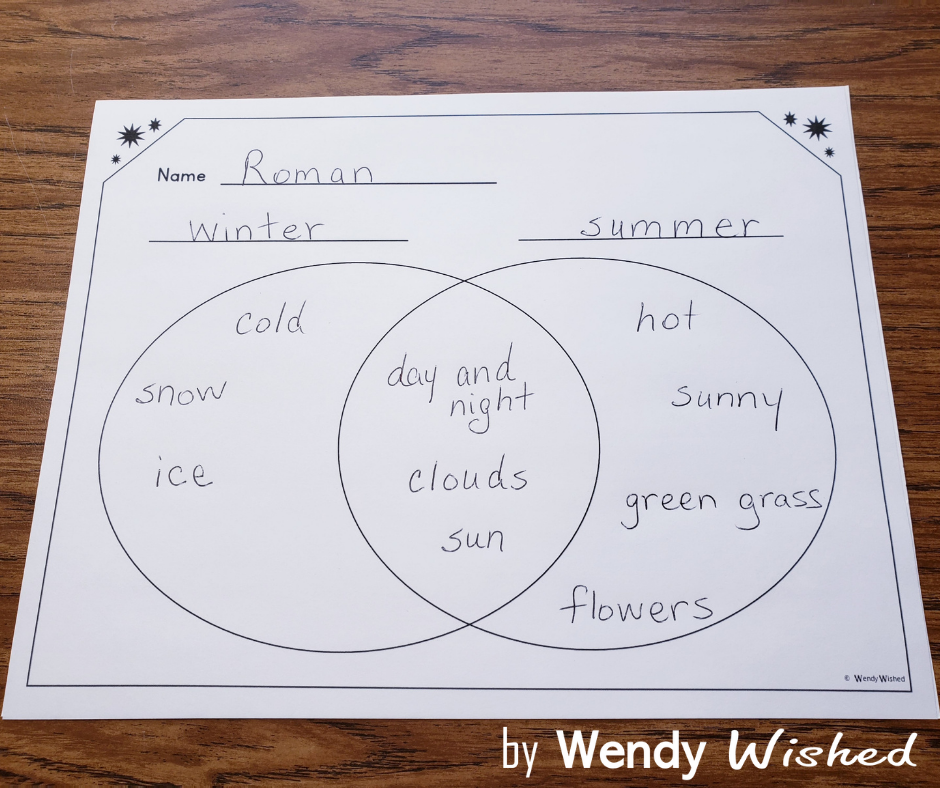
Play a Patterns in Space Game
Just say, “game” and your students will be jumping out of their seats to participate in this part of the lesson. Using a die makes it engaging for the students. Before you hand over the die, discuss how to use it and establish some rules of tossing the die so things don’t get out of control. For the purpose of accountability, provide a charting paper. Now your game incorporates math concepts too. I love sprinkling content throughout the day and across the curriculum.
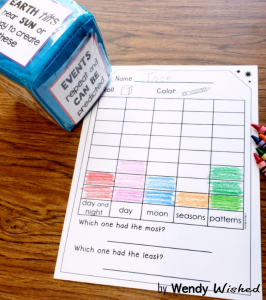
Include a Digital Activity
Today’s students are surrounded by a world of technology so include something digital for your first grade kids in your patterns in space science lesson too. I created Boom Cards™ digital task cards for students to “play” on BoomLearning.com. They are interactive games and support the concepts which students need to learn. These make learning fun. View a few slidess in the “deck” of the online interactive game here.
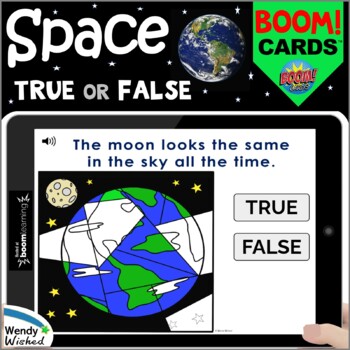
Space Theme Math FREE File
I want to make it so easy for your patterns in space science lessons to spill the space theme into math lessons too. With this in mind, I made these math worksheets for you. Again the students are pulled in with the opportunity to get out their crayons. But for you and your lesson plans, it’s all about the math concepts being addressed.
You can unsubscribe at any time.
Teaching First Grade Science Patterns in Space Activities
The space unit has always been a favorite science lesson of mine to teach but now the emphasis is on teaching patterns which can be observed. I hope these ideas help enhance your science lessons about patterns in space for your first grade students.
Get all of the materials shown for an easy to teach engaging unit or supplement your own lesson.
Just click ➡️ Wendy Wished.
Enjoy teaching science this year!
.

If you want more tips for teaching science, check out this post about
what to include in science lessons.

